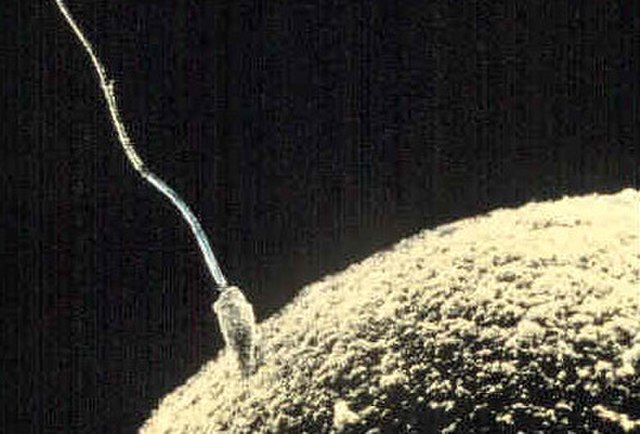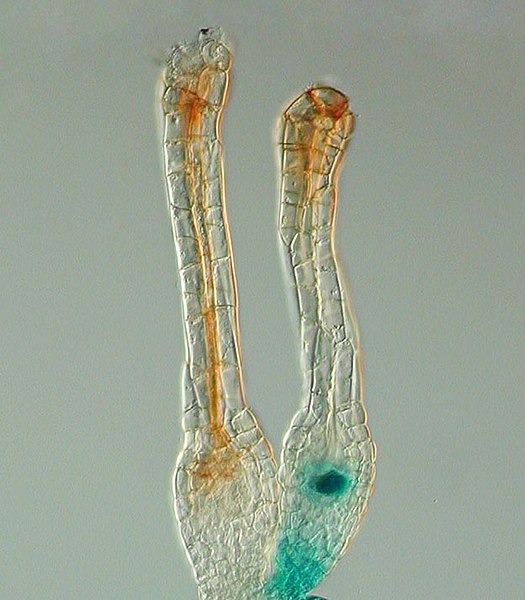Amplexus is a type of mating behavior exhibited by some externally fertilizing species in which a male grasps a female with his front legs as part of the mating process, and at the same time or with some time delay, he fertilizes the eggs, as they are released from the female's body. In amphibians, females may be grasped by the head, waist, or armpits, and the type of amplexus is characteristic of some taxonomic groups.
Orange-thighed frogs (Litoria xanthomera) in amplexus
European common frog
European common toad (Bufo bufo).
Common toad mating ball (multiple amplexus).
Fertilisation or fertilization, also known as generative fertilisation, syngamy and impregnation, is the fusion of gametes to give rise to a zygote and initiate its development into a new individual organism or offspring. While processes such as insemination or pollination, which happen before the fusion of gametes, are also sometimes informally referred to as fertilisation, these are technically separate processes. The cycle of fertilisation and development of new individuals is called sexual reproduction. During double fertilisation in angiosperms, the haploid male gamete combines with two haploid polar nuclei to form a triploid primary endosperm nucleus by the process of vegetative fertilisation.
Sperm and ovum fusing
In the bryophyte land plants, fertilisation takes place within the archegonium. This moss has been genetically modified so that the unfertilised egg within the archegonium produces a blue colour.
Red-veined darters (Sympetrum fonscolombii) flying "in cop" (male ahead), enabling the male to prevent other males from mating. The eggs are fertilised as they are laid, one at a time.







